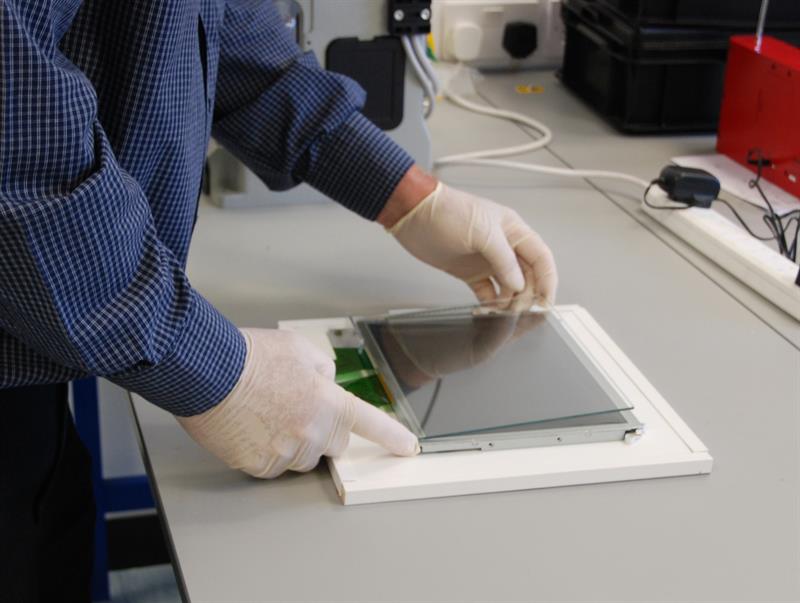Over the last few decades, rapid growth in the optoelectronics industry has altered the way products are designed and manufactured, with the ready availability of off-the-shelf components leading companies to differentiate themselves with unique software, rather than hardware.
But for niche applications, bespoke hardware can be a necessity — and requires a sophisticated, flexible design process.
Design for Manufacturing (DFM), or the practice of designing products so that they are easier and more economical to manufacture is becoming increasingly important.
From the start of the design phase, manufacturability is being considered and any potential problems addressed during the design phase - which is both more cost effective than waiting until the unit is closer to production.
Hard and soft innovation
As more electronic products come to rely on standard components, companies are innovating not with hardware, but with software - using layers of code to create unique uses for components manufactured en masse.
In this way, the sphere of innovation has moved from hardware to software. The intelligent doorbell, for instance, is a complex video tool that allows you to view visitors remotely, relies on similar hardware to decades-old tools like motion-detecting security lights.
But although consumer products, which have a short lifespan and generally serve personal purposes are able to innovate with software alone, the use of off-the-shelf components within a standardised design process can limit innovation and create significant problems when applied in commercial or industrial contexts.
Pacer’s Matthew Ashton, an optoelectronic specialist, believes that bespoke hardware solutions have particular relevance in an age of mass production, giving top-tier customers the best possible opportunity to implement ideas and differentiate their products in a diverse range of markets.
The pitfalls of standardised design
The short lifetime of consumer components and products, due to planned obsolescence or the changing demands of market are a nuisance at the best of times but can play havoc in heavily regulated industries where products must undergo thorough testing, according to Ashton.
For example, military and medical products demand longevity. With machinery that could mean the difference between life or death, the switching of a single specification on a very small component could bring the whole operation crashing to the ground. And, as Ashton explains: “It’s those types of components that can be here one day, gone the next. If a designer decides to put one of those things in because it only costs three cents, they will find that in three years’ time when the product reaches maturity, the component is gone.
“Because components sourced from bulk manufacturers remain subject to upgrades and changes, which can come at any time, the final product is vulnerable to disruption. Successful bespoke design therefore demands a bespoke process, and one that stretches all the way from supply chain management through to the final customer solution.“

Bespoke design
Pacer looks to apply its optoelectronic expertise in a diverse range of niches, across all stages of the design process, according to Ashton.
“This could mean taking a product all the way from initial design concept to delivery to market - through a feasibility study, prototyping, pre-production, field trials, and process improvement. Or, it could mean delving into a specific segment of the design process to prevent the whole production from faltering.
“As each stage of the design process is gated with strict parameters, it can be altered according to the needs of the customer, to ensure the most efficient possible navigation of the whole process. This might mean securing a robust supply chain, isolating components for individual renewal, or reducing costs with process improvement,” explains Ashton.
“The short lifetime of consumer components and products are a nuisance, at the best of times, but can play havoc in heavily regulated industries. ” Matthew Ashton |
Such a process is of particular importance in heavily regulated industries that cannot afford to be at the mercy of manufacturer obsolescence. Products must often pass multiple trials to gain the approval of a specific design, which cannot be later adjusted by the changing of a single component, because, as Ashton says: “You don’t know the end result within the system.”
The mass production of LEDs, as Ashton points out, prompted legions of engineers to design products around components that six months later were superseded by brighter, more efficient, and cheaper variants. Then, the products designed around the specific characteristics of those LEDs were left high and dry.
“Hole-in-the-wall ATMs provide another example whereby they rely on hundreds of individual sensors to carefully convey notes from vault to dispenser. Should the specification of simply one of these sensors change, then the whole flow could be disrupted and could result in a situation where the machine is spewing out wads of notes or not functioning at all,” says Ashton.
Optoelectronic detectives
The advantage for a company like Pacer, Ashton suggests, is not about being able to ensure that these changes never happen. But that when they do, they are “managed well, rather than the customer being told, bad luck because it’s a commercial part.”
By moving to bespoke products, customers are not insuring against change, as off-the-shelf components can still be vulnerable to obsolescence, but choosing to manufacture in a way that is not subject to the “fickle wind of the commercial market”, as Ashton puts it.

Components sourced from bulk manufacturers remain subject to upgrades and changes at any time |
Taking more control over the supply chain requires an investment and sidestepping the standardised design process can require additional expertise. But while this investment could be expected to work out cheaper in the long-run, it can also yield immediate savings.
By cutting out the unnecessary functions of one-size-fits-all standard components, costs can be reduced from the outset- a “stripping down” process that Pacer has used to reduce costs for one customer who required specific components to monitor levels of liquid in a waste bottle.
“Instead of a one-size-fits-all off the shelf sensor, which can change power gain, is highly configurable for different applications and can come at a high cost, what we’re doing is coming up with a stripped-down version that meets all those requirements.Such an approach gives the client the performance they need without the undue processes attributed to the standard product and can be sold to the customer significantly cheaper, even at high volumes.” says divisional manager James Woodhead from Pacer.
Deviating from standard products and procedures can raise a lot of questions, and these can often only be resolved with expertise.
But, as Ashton concludes, it’s a process that requires unique powers of observation, knowledge and insight, “as you never know what case is going to walk through the door.”













